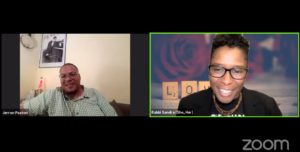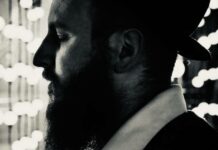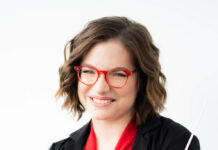
By Eleanor Linafelt
Like Judaism, the musical form of the blues is steeped in tradition.
That was just one of the many connections that the rabbi, activist and musician Sandra Lawson and blues musician and historian Jerron “Blind Boy” Paxton made between the blues and Judaism in their virtual discussion, “The Torah of Blues.”
“The biggest things that blues teaches me are what, for Jewish culture, are already there, like love and respect and tradition,” Paxton said.
The event was hosted by The National Museum of American Jewish History on May 26 as part of its Jewish American Heritage Month programming. In an organic, expansive and laughter-filled conversation, Paxton and Lawson connected over their shared Black and Jewish identities and their individual relationships to blues music and the Torah.
Dan Samuels, the public programs manager at NMAJH, was inspired to organize the program after coming across Lawson’s blog, also called The Torah of Blues. She picks blues songs to learn and analyzes the way that the Torah appears in them.
“I know I am not the first Jewish person to make a connection between Jews and the blues, but I do bring a unique perspective as a black rabbi with Southern roots,” Lawson wrote in her first blog post. “I see blues music as a window to my heritage, my culture and I see it as a legacy that was left for me by my ancestors to discover.”
Lawson, the inaugural director of racial diversity, equity and inclusion at Reconstructing Judaism, the central organization of the Reconstructionist movement, told Paxton that one of the many ways she personally connects to Judaism is through the Torah that appears in Black spiritual music, the musical predecessor to the blues.
“Our ancestors who were brought here and enslaved, even though they weren’t allowed to read, found a way to connect through music,” she said. “They found hope in the stories from the Hebrew Bible, which then gets turned into spirituals and blues.”
The program included prerecorded musical performances from Paxton interspersed throughout the conversation. The multi-instrumentalist, who draws from 1920s and ’30s music, has toured internationally and opened for blues legends including Buddy Guy and Robert Cray.
He sang and played solo banjo for the first two songs. For the final song, an upbeat instrumental, he was accompanied by two other musicians playing washboard and piano.
The first song Paxton performed was called “How Did You Feel When You Come Out of the Wilderness.” He described it as a song that helped enslaved people get through their struggles in American cotton fields, but that it could also connect to the Jewish experience.
He noted the parallels between the history of Jewish and Black people.
“Jewish people and Black people have perseverance,” Paxton said. “If it wasn’t for perseverance, we wouldn’t be here.”
Paxton described the second song he performed as having a “Mizrahi-type mood to it,” but performed in the picking style of players of the akonting, a West African instrument that predated the banjo.
Paxton and Lawson discussed the way that both spirituals and the chanting of the Torah has helped preserve knowledge throughout history.
“In the Jewish tradition when Jews were not literate, someone in the public square would open the Torah scroll and loudly read the Torah,” Lawson said, to which Paxton responded, “That’s why we sing so much Torah. That solidifies things in your memory.”
The two also talked about the role of music in prayer.
“Certain things are hard to articulate, but when you sing you do not have to articulate,” Paxton said. “That’s the beautiful thing about prayer, chanting and meditation.”
Lawson said that she never used to sing, but prayer has offered her an avenue to do so.
“Prayer opens up my heart to sing,” she said. “I see blues often as a prayer.”
“The Torah of Blues” was co-sponsored by Jews in ALL Hues, an organization that supports Jews of color, and Reconstructing Judaism.






